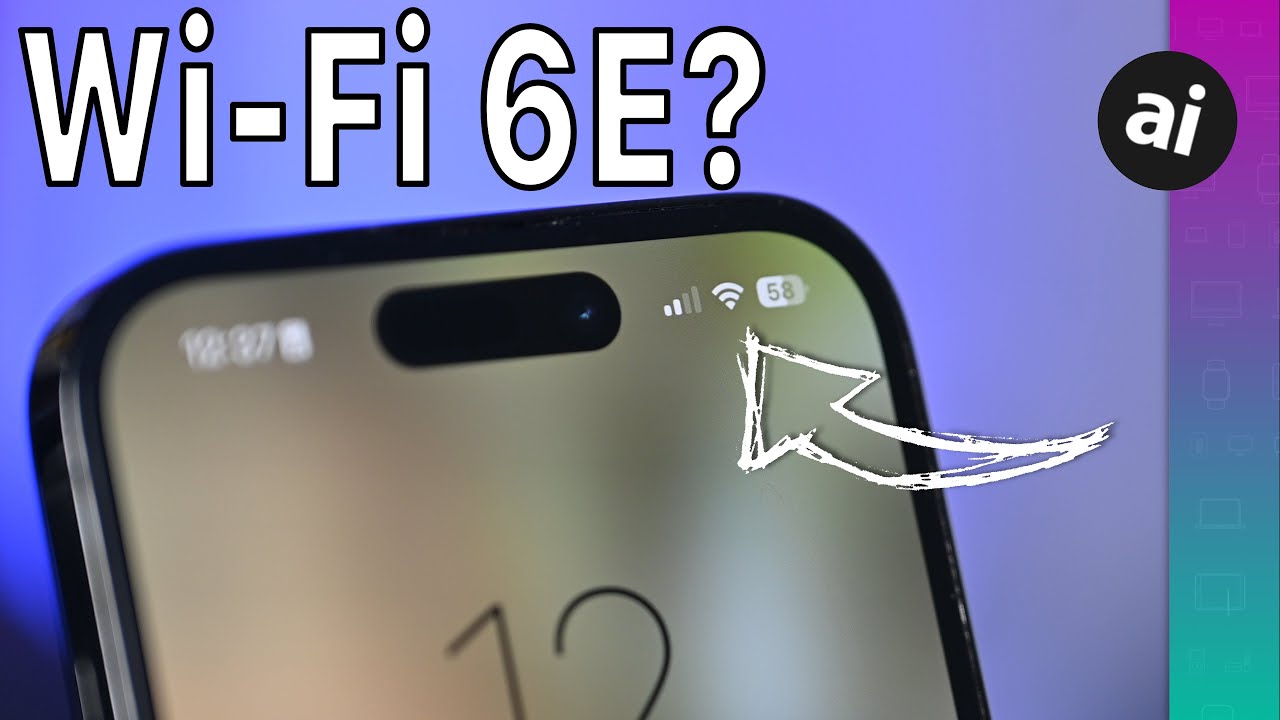What is Wi-Fi 6E?
- Definition and Improvements: Wi-Fi 6E is an advancement over Wi-Fi 6, retaining all its benefits and adding a new 6 GHz frequency band. It enhances network performance, particularly in crowded areas, by reducing interference from other devices.
- Technical Features: Wi-Fi 6E offers channels up to 160 megahertz in width, significantly larger than previous versions. This addition aims to improve speed and reliability, especially in areas with multiple overlapping networks.
Device Support for Wi-Fi 6E
- Apple Devices: As of the video’s recording, certain Apple products like the latest MacBook Pros, Mac Studio, Mac minis, and iPad Pros support Wi-Fi 6E.
- Other Devices: High-end PCs and some Android devices also support Wi-Fi 6E. There were rumors about upcoming Apple products (like the iPhone 15 Pro and Ultra) including Wi-Fi 6E support.
- General Availability: Despite its benefits, not many devices currently support Wi-Fi 6E, limiting its immediate utility.
Do You Need Wi-Fi 6E?
- Depends on Use Case: The necessity of Wi-Fi 6E depends on individual network environments and usage patterns. The 6 GHz band has limitations in terms of signal penetration through walls and other obstacles.
- Mesh Networks: For homes with Wi-Fi 6E-compatible mesh networks, the performance could be significantly enhanced.
Reasons to Upgrade to Wi-Fi 6E
- Future-Proofing: Investing in Wi-Fi 6E might be wise if you’re seeking long-term value from your router, especially in densely populated areas.
- Performance in Crowded Areas: Wi-Fi 6E can greatly reduce network congestion in areas with many overlapping networks.
- Shorter Wavelengths, Less Penetration: Wi-Fi 6E and other advanced wireless technologies utilize higher frequencies with shorter wavelengths. There is emerging evidence suggesting that these shorter wavelengths may have fewer biological effects due to their reduced penetration depth. (More on health aspects below)
Wi-Fi 7 on the Horizon
- Rapid Advancements: Even as Wi-Fi 6E is still being adopted, there’s already talk about Wi-Fi 7, which is rumored to be supported by future devices like the iPhone 16.
- Significant Upgrades with Wi-Fi 7: Expected improvements include a new 320 MHz Ultra wideband Spectrum, potentially offering speeds up to 4.8 times faster than Wi-Fi 6E.
It’s important to consider recent research that highlights the potential health implications of different generations of wireless technology, especially in the context of mobile phone use and its impact on human health.
Updated Perspective: Health Implications of Wireless Technology
Insights from a Semen Quality Study
- Study Background: A study titled “Association between self-reported mobile phone use and the semen quality of young men” examined the impact of mobile phone usage on the semen quality of young men. It specifically looked at sperm concentration and total sperm count (TSC).
- Findings: The study found a correlation between increased mobile phone usage and declines in certain semen quality parameters. This suggests potential reproductive health risks associated with prolonged exposure to mobile phone radiation.
Technological Evolution from 2G to 4G
- Radiation Exposure Reduction: The transition from 2G to 4G technology marked a significant decrease in radiation exposure and effects on sperm. 2G phones transmitted at maximum power and longer wavelengths, leading to higher radiation levels compared to the reduced transmitting power of 3G and 4G technologies.
- Implications for Health: The reduced radiation exposure with newer technologies like 4G may indicate that these are less harmful compared to older 2G technology.
Relevance to Wi-Fi 6E
- Shorter Wavelengths, Less Penetration: Wi-Fi 6E and other advanced wireless technologies utilize higher frequencies with shorter wavelengths. There is emerging evidence suggesting that these shorter wavelengths may have fewer biological effects due to their reduced penetration depth.
- Older Tech vs. Newer Tech: This perspective implies that older wireless technologies might pose more health risks compared to newer ones, like Wi-Fi 6E, which operate at higher frequencies.
Implications for Upgrading Technology
- Health Considerations in Upgrades: When considering upgrading to Wi-Fi 6E or newer smartphones, it’s not just about improved performance and features. The potential health benefits associated with reduced radiation exposure from higher frequency bands should also be a factor.
- Balancing Innovation and Health: As wireless technology continues to advance, it becomes increasingly important to balance technological innovation with health considerations, ensuring sustainable and safe progress.
Conclusion
The journey from earlier wireless technologies to the latest ones, such as Wi-Fi 6E, is not only a narrative of technological advancement but also a pathway to understanding the complex relationship between technology and health. As we embrace newer technologies, it is crucial to stay informed about their potential health implications, making decisions that prioritize both innovation and well-being.
Conclusion
- Consider Your Needs: The decision to upgrade to Wi-Fi 6E should be based on your current and anticipated device ecosystem, network demands, and living environment.
- Look to the Future: With Wi-Fi 7 already in discussions, it may be worthwhile to wait for its launch for a more significant upgrade, especially if you’re not in urgent need of a new router.








